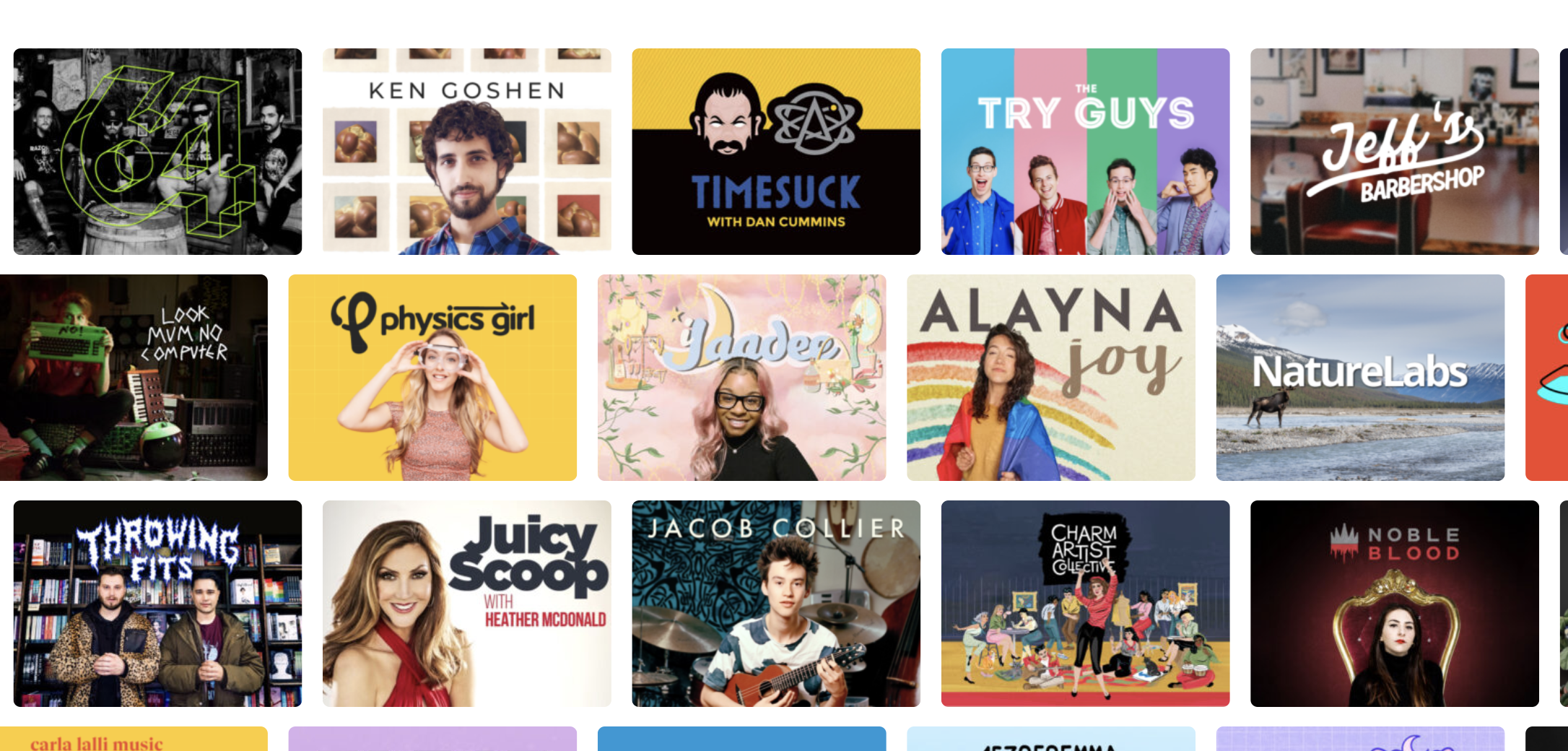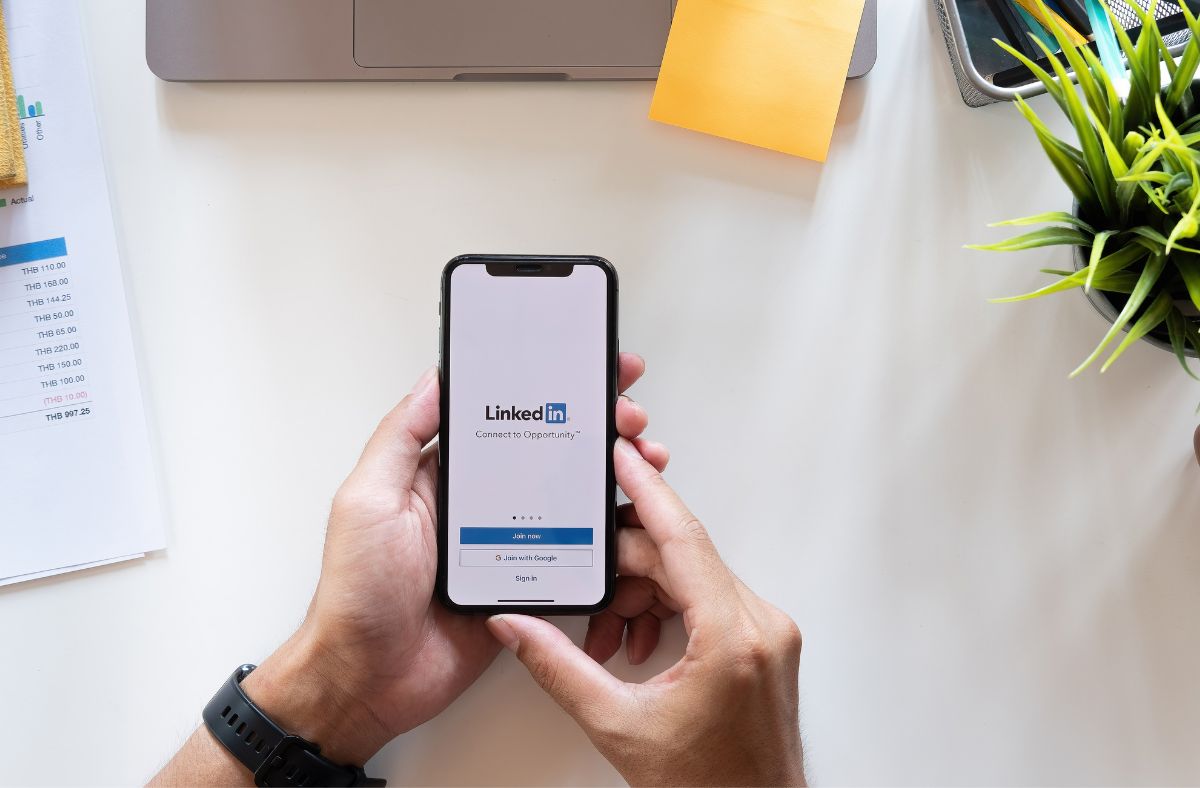North Kato Living: Summer Memories



Craft breweries have exploded in popularity over the past few years, making it even more important to have a strong social media presence and targeted marketing plan. For small craft breweries, developing a unique value proposition and incorporating it into their storytelling can help set them apart from their competition. In this blog post, I’ll outline ten unique social media ideas for breweries that can help them elevate their brand identities, engage with their followers, and showcase their unique value proposition.
Every brewery has a unique story to tell. Share your origin story, the inspiration behind your beer recipes, or your commitment to sustainability. By showcasing the brewing process and your passionate team, you give your audience a glimpse into what sets your brewery apart. Share photos and videos of your team working on new recipes, or the brewers discussing their craft. This type of content helps humanize your brand and creates a deeper connection with your followers.
Craft breweries often pride themselves on their innovative, small-batch creations. To capitalize on this, launch exclusive, limited-time beers with engaging visuals and storytelling that highlights what makes each release unique. Create a sense of urgency by using countdown timers and emphasizing the limited availability of these special brews. By offering something distinctive and exclusive, you’ll give potential customers a reason to choose your brewery over others.
Hosting live-streamed beer tasting events on platforms like Facebook Live, Instagram Live, or YouTube allows you to connect with your audience on a more personal level. Use these events to showcase your brewery’s unique value proposition, whether it’s your emphasis on local ingredients or your commitment to a specific brewing technique. Invite guest speakers, such as beer enthusiasts, brewers, or food pairing experts, to further engage your audience and showcase your expertise in the craft beer industry.
Partner with micro-influencers in your area who have a strong following and passion for craft beer. Create content together, such as taste tests or brewery tours, that highlights your unique offerings and the qualities that set your brewery apart. By tapping into the influencer’s audience, you’ll reach new potential customers who may not have discovered your brand otherwise.
Run a themed photo contest on Instagram or Facebook that encourages users to submit pictures of themselves enjoying your brewery’s beers in creative ways that highlight your unique value proposition. For example, if your brewery focuses on eco-friendly practices, the theme could be “sustainable sipping.” Offer prizes like brewery merchandise or free beer for the winners, and be sure to use a unique hashtag for the contest to make it easy for others to discover your brand.
Engage your audience with interactive content, such as polls on favorite beer styles or quizzes to test their beer knowledge. This type of content not only entertains your followers but also positions your brand as an expert in the craft beer industry. As you create these polls and quizzes, be sure to incorporate your unique value proposition to further distinguish your brand.
Develop a unique and memorable hashtag for your brewery and encourage customers to share their experiences using it. This will create a sense of community and make it easier for potential customers to discover your brand. For example, if your brewery’s unique value proposition is its focus on locally-sourced ingredients, you could create a hashtag like #LocalBrewLove.
I help small businesses develop comprehensive marketing campaigns, define their marketing strategy, and create unique digital marketing campaigns. Reach out to schedule a discovery call today!

After working in the nonprofit space for nearly four years, I can attest to the fact that recruiting, training and retaining volunteers can be a big challenge. With limited resources and funding, nonprofits rely on the help of volunteers to achieve their goals and mission. Living in a community where nonprofits are prevalent, competition for quality volunteers can be fierce. Here are a few ways that nonprofits can use effective marketing to recruit and retain volunteers.
To recruit volunteers effectively, it’s important to understand who your target audience is. Take the time to research and identify the demographics and interests of potential volunteers. This may include factors such as age, profession, location, and education level. By understanding your target audience, you can tailor your message to resonate with them, making your campaign more effective.
One of the best ways to attract volunteers is by sharing the impact they can make in the community. Use real-life examples and personal stories to show the difference volunteers can make. People are more likely to get involved if they can see how their efforts will directly benefit the community. Make sure your stories are authentic, relatable, and inspiring, highlighting the positive changes that come from volunteering.
An effective volunteer recruitment campaign needs to reach the right people at the right time. Determine the best channels to reach your target audience using a mix of online and offline methods. Social media platforms like Facebook, Instagram, Twitter, and LinkedIn are excellent for reaching a wide audience. Email marketing, blog posts, and content marketing can also help to spread the word. Don’t forget about traditional media outlets, such as local newspapers, radio, or TV stations, which can be valuable in reaching your target demographic. Nonprofits can also take advantage of the Google Ads Grant for online search.
Partnering with other organizations, local influencers, and businesses can help to broaden your reach and amplify your message. Collaborations can lend credibility to your campaign, making it more appealing to potential volunteers. Look for partners who share your values and have a similar target audience. By joining forces, you can increase the visibility of your volunteer program and tap into new networks of potential volunteers.
Visual appeal is crucial for capturing attention and making your message memorable. Invest time in creating eye-catching visuals that convey the impact of volunteering. Use high-quality photos, videos, and infographics to tell your story and illustrate the benefits of getting involved. Engaging visuals will not only make your campaign more shareable on social media but also help potential volunteers understand the importance of your cause.
To encourage people to sign up as volunteers, consider offering incentives that make volunteering more appealing. This might include providing training opportunities, access to exclusive resources, networking events, or recognition for their efforts. Highlighting these incentives in your marketing materials can give potential volunteers an additional reason to get involved.
Monitoring and evaluating the success of your campaign is essential for making improvements and optimizing your efforts. Track various metrics, such as website traffic, social media engagement, sign-ups, and conversions, to gauge the effectiveness of your campaign. Analyzing this data will help you identify what is working and what needs adjustment, ensuring that your campaign continues to generate interest in your volunteer program.
Word-of-mouth is a powerful tool for attracting volunteers, so encourage your current supporters and volunteers to share their experiences and help spread the word. Personal recommendations and testimonials can help build trust and credibility, making potential volunteers more likely to get involved. Provide shareable content and ask your supporters to share it on their social media platforms to help amplify your message.
Organizing events, workshops, or webinars can provide potential volunteers with an opportunity to learn more about your organization and its volunteer program. These events can be held in person or virtually, depending on the needs and preferences of your target audience. By hosting engaging and informative events, you’ll give potential volunteers a chance to meet your team, network with other like-minded individuals, and gain a better understanding of your mission and goals. This can help them feel more connected to your cause and excited about getting involved.
After your campaign, it’s crucial to maintain communication with those who showed interest in volunteering. By keeping them engaged and informed, you’ll increase the likelihood that they’ll commit to volunteering in the future. Send regular updates, event invitations, or follow-up emails to stay connected with potential volunteers. Make sure you include impact stories from current volunteers. Provide them with additional information about your organization and any new opportunities that arise, ensuring they remain interested and invested in your cause.
Ready to create a successful volunteer recruitment campaign for your nonprofit? Contact us to get started today!

In the competitive social media landscape, writing copy that stands out from the competition is an absolute must. To truly make an impact, your social media copywriting should evoke feelings, not just list product features. In this blog post, we’ll explore why selling feelings is crucial for businesses, how to evoke emotions in your marketing, and how this approach leads to long-lasting customer relationships and increased sales.
Research shows that an astounding 90% of purchasing decisions are driven by emotions rather than rational thinking. By tapping into emotions, you can appeal to customers’ desires and aspirations, turning casual social media scrollers into loyal brand followers. Take, for example, a jewelry brand that shares stories of love, commitment, and special moments on their social media. These emotional connections can turn a simple accessory into a cherished symbol, making people fall in love with the brand first and then find reasons to justify their purchases. Thus, emotionally charged copywriting is essential for social media success.
Emotionally connected customers are more likely to stay true to a brand and make repeat purchases. By building an emotional rapport on social media, you can establish long-lasting relationships with your audience and foster brand loyalty, ultimately leading to a solid customer base and boosted revenue. Consider how Apple has cultivated a sense of community and belonging among its customers through engaging and emotion-driven social media content. This emotional connection keeps customers coming back for more, eagerly anticipating new product releases.
Content with an emotional punch is twice as likely to be shared as purely factual content. By infusing your social media copy with passion and excitement, you can spark organic conversations and create a buzz around your brand. For example, a fitness brand might share inspiring stories of personal transformation, eliciting feelings of awe and motivation. This emotional content encourages users to share the posts with their networks, ultimately widening the brand’s audience. Harnessing the power of emotion on social media can lead to exponential growth.
Storytelling is a powerful tool for evoking emotions and creating memorable experiences, especially on social media. Craft stories that resonate with your target audience, illustrating how your product or service can enhance their lives. A travel agency, for instance, could share the story of a couple’s dream honeymoon adventure, highlighting the unforgettable memories and breathtaking locations. By incorporating storytelling into your social media copy, you can captivate your audience and engage them emotionally.
Visuals are crucial for emotional marketing on social media. Images can evoke feelings and convey your brand’s message in ways that text alone cannot. Pair powerful imagery with your storytelling to create an emotional connection with your audience. For example, a nonprofit organization might use a combination of heartwarming photos and personal stories to communicate the positive impact their efforts have on the community. These visuals serve to evoke empathy and encourage followers to support the cause.
Social proof, such as customer testimonials and reviews, can help build trust and credibility for your brand on social media. By showcasing real-life experiences of satisfied customers, you can evoke emotions and demonstrate the positive impact of your product or service on people’s lives. An online education platform, for instance, could share success stories of students who have landed their dream jobs or started their own businesses after completing a course. These testimonials instill a sense of hope and motivation in potential customers, encouraging them to enroll and achieve their own goals.
Different emotions can trigger specific actions in your audience. For example, fear can drive urgency, while happiness can encourage sharing. Understand which emotions align with your brand and target audience, and use them to craft your social media copy and sell feelings effectively. A cybersecurity company, for example, might use fear as an emotional trigger by sharing alarming statistics about data breaches and emphasizing the importance of protecting sensitive information. This sense of urgency can prompt potential customers to take action and invest in cybersecurity solutions.
When you evoke emotions on social media, you’re more likely to attract and convert prospects into customers. By appealing to their emotions and demonstrating how your product or service can make a difference in their lives, you can inspire them to take action and make a purchase. For instance, a pet adoption center could share heartwarming stories of rescued animals finding their forever homes. These emotional stories can inspire followers to adopt a pet or support the organization, ultimately increasing adoption rates and donations.
Emotional copywriting on social media helps create emotional connections with your customers, leading to stronger brand loyalty. When customers associate your brand with positive feelings, they’re more likely to stick around and make repeat purchases, increasing your customer lifetime value. A skincare brand, for example, might share user-generated content featuring glowing, happy customers who have experienced noticeable improvements in their skin. These positive emotions can keep customers coming back for more, confident in the brand’s ability to deliver results.
As mentioned earlier, emotionally charged content is shared more frequently than purely factual content. By evoking emotions through your social media copy, you can encourage your audience to spread the word about your brand, leading to increased brand awareness and growth. A restaurant, for example, could share mouth-watering images of their dishes accompanied by vivid descriptions that evoke feelings of hunger and desire. This tantalizing content can entice followers to share with their friends, expanding the restaurant’s reach and attracting new patrons.
Emotional copywriting on social media is a game-changing strategy that can unlock business success. By understanding the emotions that drive purchasing decisions and leveraging them in your social media copy, you can build strong emotional connections with your audience, foster brand loyalty, and ultimately boost sales. So, go ahead and tug at those heartstrings, and watch your social media presence flourish.

Are you a content creator looking to make a living from your passion? Look no further than Patreon! With millions of active users, it’s the perfect platform to monetize your work by offering exclusive content and rewards to your patrons in exchange for a monthly subscription fee.
Patreon is a subscription-based platform that functions as an exclusive club for its subscribers. It allows creators to monetize their services, advice, and specialized content, as well as interact with their fans. Types of content you’ll find on Patreon include sneak peeks of upcoming projects, personalized messages, tutorials, lessons, exclusive merchandise, and digital downloads. The kind of material you find on Patreon truly depends on the creator and their niche.
But creating a Patreon page isn’t enough to succeed. To build a strong following and attract more patrons, you need to market yourself effectively. Here are some tips to help you stand out from the crowd:
To begin with, define your niche and target audience. Consider what type of content you want to create and who your audience is. This will help you create content that resonates with your audience and helps you stand out from the crowd.
Your Patreon profile is your online storefront. Make sure it’s complete with a professional profile picture, an engaging bio, and a clear description of your work. Use high-quality images and videos to showcase your work and make it easy for patrons to understand what they can expect from you.
One of the biggest draws of Patreon is the exclusive content and rewards creators offer to their patrons. To attract more patrons, you need to offer something unique and valuable. This could be early access to your work, behind-the-scenes content, personalized messages, or exclusive merchandise.
Social media is a powerful tool for marketing on Patreon. You can use platforms like Twitter, Facebook, and Instagram to promote your Patreon page and engage with your audience. Share sneak peeks of your upcoming projects, behind-the-scenes content, and exclusive offers to entice your followers to become your patrons.
Collaborating with other creators is a great way to expand your reach on Patreon. Look for creators in your niche who have a similar target audience and reach out to them for collaborations. You could create joint content, cross-promote each other’s work, or offer exclusive discounts to each other’s patrons.
Engaging with your patrons is key to retaining them and attracting new ones. Make sure to thank your patrons for their support, respond to their messages and comments, and ask for their feedback. This will create a sense of community around your work and make your patrons feel valued.
Consistency and transparency are essential for building trust with your patrons. Make sure to deliver on your promises and offer regular updates on your work. Be transparent about your goals and how you plan to use your patrons’ support. This will help you build a loyal following and attract new patrons.
Analyzing your Patreon metrics is essential for understanding what works and what doesn’t in your marketing strategy. Keep an eye on your patron growth, engagement rate, and revenue, and use this data to optimize your content and marketing strategy.
Make sure to promote your Patreon page everywhere you can, including your website, email newsletter, business cards, and any other marketing material. The more exposure your Patreon page gets, the more likely you are to attract new patrons.
Finally, never stop learning and experimenting with your marketing strategy. Keep up to date with the latest trends and best practices, and be willing to try new things. What works for one creator may not work for another, so be open to experimenting and finding what works.
In conclusion, marketing yourself on Patreon requires creativity, consistency, and transparency. By defining your niche, creating a compelling profile, offering exclusive content and rewards, leveraging social media, collaborating with other creators, engaging with your subscribers, being consistent and transparent, analyzing your metrics, promoting your Patreon page everywhere, and never stop learning and experimenting, you can attract more patrons and build a successful career on Patreon.
Remember that Patreon is not only a platform for monetizing your work but also a community of supporters who believe in your talent and want to see you succeed. By building a strong relationship with your patrons, you can not only achieve financial stability but also gain a loyal fan base that will support you throughout your career.
In today’s world of social media noise, it’s become increasingly important for companies to have a strong and unique brand voice. A brand’s voice refers to the personality and tone that a business uses to communicate with its target audience. This voice is expressed through messaging and content, whether through advertising, social media, or other marketing channels.
In this blog post, I will help you understand why brand voice is crucial and how it can impact your business’s success. I’ll share information on how a strong brand voice can help you differentiate your company from its competitors, foster customer loyalty, and boost brand recognition.
Brand voice encompasses the tone, language, and personality used by a brand in communicating with its customers. It’s a way for a brand to convey its values, beliefs, and culture to its target audience. By using a consistent brand voice, businesses can help customers connect with their brand and understand what it stands for. It helps align the visuals with the message you are wanting to convey.
In today’s overcrowded marketplaces, differentiation is key to standing out from competitors. A strong brand voice can help a business differentiate itself and rise above the notice by expressing its unique personality and values. This can help customers connect with the brand on a deeper level and create a sense of loyalty.
A consistent brand voice can also help to build customer loyalty. When customers feel a connection to a brand, they are more likely to become repeat customers and recommend the brand to others. A strong brand voice can help to create a sense of community around a brand, fostering a loyal customer base.
Brand voice can play a crucial role in increasing brand awareness. A strong, consistent brand voice can help to create a recognizable identity for a brand. This can help customers remember the brand and what it stands for.
Developing a strong brand voice involves identifying the values and personality of a brand and expressing them in a consistent manner across all communication channels. Here are some steps to develop a strong brand voice:
Begin by defining the values and personality of your brand. What does your brand stand for? What are its core beliefs and principles? Once you have identified these values, you can use them to guide your brand voice. For example, if understanding and kindness is your brand’s value, your words will convey a tone of empathy and understanding. In contrast, if your brand aims to establish your expertise in the marketplace, your words will be designed to convey authority.
Understanding your target audience is key to developing a brand voice that resonates with them. What tone and language will they respond to? What values are important to them? This information can help you develop a brand voice that speaks directly to your target audience.
Consistency is crucial when developing a brand voice. Ensure that your brand voice is consistent across all communication channels, including advertising, social media, and other forms of marketing. This will help to create a recognizable identity for your brand and build customer loyalty and trust.
A brand voice should evolve over time as a business grows and changes. Regularly reassess your brand voice to ensure that it still aligns with your brand’s values and resonates with your target audience.
A strong brand voice is an essential ingredient for any successful business. It can help to differentiate a brand from its competitors, foster customer loyalty, and boost brand recognition. By developing a consistent brand voice that aligns with your brand’s values and speaks directly to your target audience, you can create a strong, recognizable brand identity that will help your business thrive.

LinkedIn is a potent platform that small businesses can utilize to achieve their objectives. With over 700 million members worldwide, LinkedIn offers endless possibilities for networking, generating leads, and building your brand. In this discourse, we will scrutinize the different methods small businesses can leverage LinkedIn to attain their goals.
Your LinkedIn company page is your digital identity on the platform, and it’s imperative to make an indelible first impression. A well-crafted company page can magnetize potential customers, showcase your brand, and establish your credibility. Ensure to incorporate a lucid and succinct depiction of your business, comprising your commodities or services, your mission statement, and your unique selling propositions. Furthermore, add your logo and a professional cover image that accurately represents your brand. Lastly, append your website link and other pertinent social media links to your page.
One of the primary advantages of LinkedIn is its networking capabilities. By establishing connections with potential customers, businesses can build relationships that lead to new opportunities. To do this, use the search feature to discover people who match your ideal customer profile. Once you find them, send them a personalized connection request that introduces yourself and your business. Use the messaging feature to follow up and start building a relationship. Engage with your connections’ posts and share valuable content to keep your business top-of-mind.
Joining LinkedIn groups can assist you in building your network, establish yourself as an authority in your industry, and generate leads. Look for groups related to your industry or niche and participate in discussions. Share your expertise, answer questions, and provide value to the group. By contributing valuable insights, you can establish yourself as a thought leader and gain credibility in your industry.
Publishing content on LinkedIn can help you showcase your proficiency, build your brand, and attract potential customers. Share your insights, tips, and advice on topics related to your business. This can help establish you as an authority in your industry and generate leads. Ensure that your content is captivating and offers value to your readers.
Partnering with influencers is a popular marketing strategy across various social media platforms, including LinkedIn. By collaborating with industry influencers and thought leaders, businesses can reach a wider audience and gain credibility by association. Look for influencers in your industry and reach out to them to discuss potential partnerships.
LinkedIn is a prevalent platform for recruitment and job search. Businesses can use LinkedIn to post job openings, connect with potential candidates, and showcase their company culture to attract top talent. Be sure to optimize your job postings by including relevant keywords and highlighting the perks of working for your business.
LinkedIn offers various advertising options, including sponsored content. By creating targeted ads and promoting their content to specific demographics and interests, businesses can increase their visibility and reach new customers. Use LinkedIn’s targeting features to reach your ideal customer profile and promote your business to potential leads.
LinkedIn is a valuable platform that small businesses can use to achieve their objectives. By creating a strong company page, connecting with potential customers, joining LinkedIn groups, publishing unique content, collaborating with influencers, leveraging LinkedIn for recruitment, and using sponsored content, businesses can utilize LinkedIn to grow their brand and generate new opportunities.
In the last decade, Instagram has become one of the most popular social media platforms in the world, and for good reason. With millions of active users, it’s a great way to connect with friends and family, share your favorite moments, and even promote your business or personal brand. But if you’re looking to take your Instagram game to the next level, there’s one feature you absolutely need to start using: Instagram Reels.
Reels are short, engaging, vertical videos that can be up to 60 seconds long. They allow you to showcase your creativity, share your personality, and connect with your audience. Reels are a great way to increase your reach and engagement on the platform, but if you’re new to Reels, you might be wondering how to get started. Here are some tips and tricks to help you create amazing Reels that will captivate your audience and grow your following.
The first thing you need to know about Reels is that they’re all about showing your human side. People want to see real humans using your products or services, so don’t be afraid to get your team involved and show a little personality. Be authentic, be yourself, and have fun!
One of the best ways to increase your exposure on Instagram is by using trending audio in your Reels. You can identify trending audio by the little arrow next to the name of the sound in any Reel. Try to aim for trending audio that doesn’t yet have too many competing Reels, so that yours will stand out.
Capturing your audience’s attention in the first three seconds of your Reel is absolutely essential. To do this, you should use dynamic motion and teaser titles that are sure to grab their attention. But make sure you deliver on the promise of your title – watchbait is a big no-no. Show (and tell) people in the first three seconds what they’ll get out of your Reel and why they should keep watching. And don’t forget to add text to your Reels to make them more accessible to everyone.
Interactive features like the vote button, quiz button, and question button really let you get to know your audience. They also provide a great opportunity for getting your community involved and driving good engagement rates. Try asking followers what kind of content they want to see from you. Or use the Question sticker to do a follower Q&A.
If you’re not sure where to start with your Reels, using a template can be a great way to get started. Templates automatically sync your clips to the audio in the original Reel, making it easy to create amazing content without a lot of fuss.
Instagram Stories are a great way to experiment with new ideas and more casual content because they disappear after 24 hours. But sometimes you want your Stories to stick around. For those occasions, there are Stories highlights. Highlights live on your Instagram page above your grid. In addition to saving your best Stories, you can also use them to create space for extra information about your business or products.
Your Instagram grid should have a visually consistent style, and viewers should be able to recognize one of your posts instantly when it appears in their feed. One way to achieve this is to keep the colors you use in line with your brand style guide. Another is to use design tools with pre-built templates, like the Canva integration in Hootsuite Composer.
Hashtags are still important on Instagram. Using specific niche hashtags can help you connect with existing
passionate communities on Instagram. Research the hashtags that are relevant to your niche and include them in your Reels. Additionally, creating a brand hashtag can help build awareness around your business or personal brand.
To improve your Reels’ performance, it’s essential to understand your audience’s behavior. Instagram provides analytics for your Reels, allowing you to see how many views, likes, comments, and shares each Reel has received. You can also see demographic data about your audience, such as age, gender, and location. Use this information to fine-tune your content and create Reels that resonate with your audience.
Collaborating with other creators is an excellent way to reach a wider audience and build your following. Find other creators in your niche and reach out to them about creating Reels together. You can also participate in Instagram challenges, which are popular on the platform and can help increase your exposure.
Instagram Reels are not only a fun way to engage with your audience, but they can also be a powerful tool for promoting your business. Use Reels to showcase your products or services, highlight customer testimonials, or provide behind-the-scenes glimpses of your business. You can also use Reels to promote sales or special offers.
Finally, don’t be afraid to experiment with different types of content in your Reels. Try out different formats, such as tutorials, product demos, or interviews. Mix up the visuals with different camera angles, transitions, and effects. The more creative you are, the more likely your Reels are to stand out and capture your audience’s attention.
In conclusion, Instagram Reels are a powerful tool for growing your audience, increasing engagement, and promoting your business or personal brand. By following these tips and experimenting with different types of content, you can create Reels that are sure to captivate your audience and help you achieve your goals on the platform. So go ahead and start creating – the possibilities are endless!

Nonprofits can ensure they are consistent and clear with their communications on social media by following a few key practices:
By following these practices, nonprofits can be consistent and clear with their communications on social media, which can help them effectively communicate their mission and values to their audience.

Measuring the impact of marketing activities can be challenging for nonprofits, but it is essential to determine the effectiveness of their marketing strategies. Nonprofits often have limited resources, making it crucial to understand which marketing activities are producing the desired outcomes. By measuring outcomes, nonprofits can identify which marketing strategies are working well and adjust their approach accordingly. Here are some common ways for nonprofits to measure the success of their marketing activities:
By using these five methods to measure and evaluate the success of their marketing activities, nonprofits can ensure that they are making progress toward their goals and maximizing their impact on their mission.